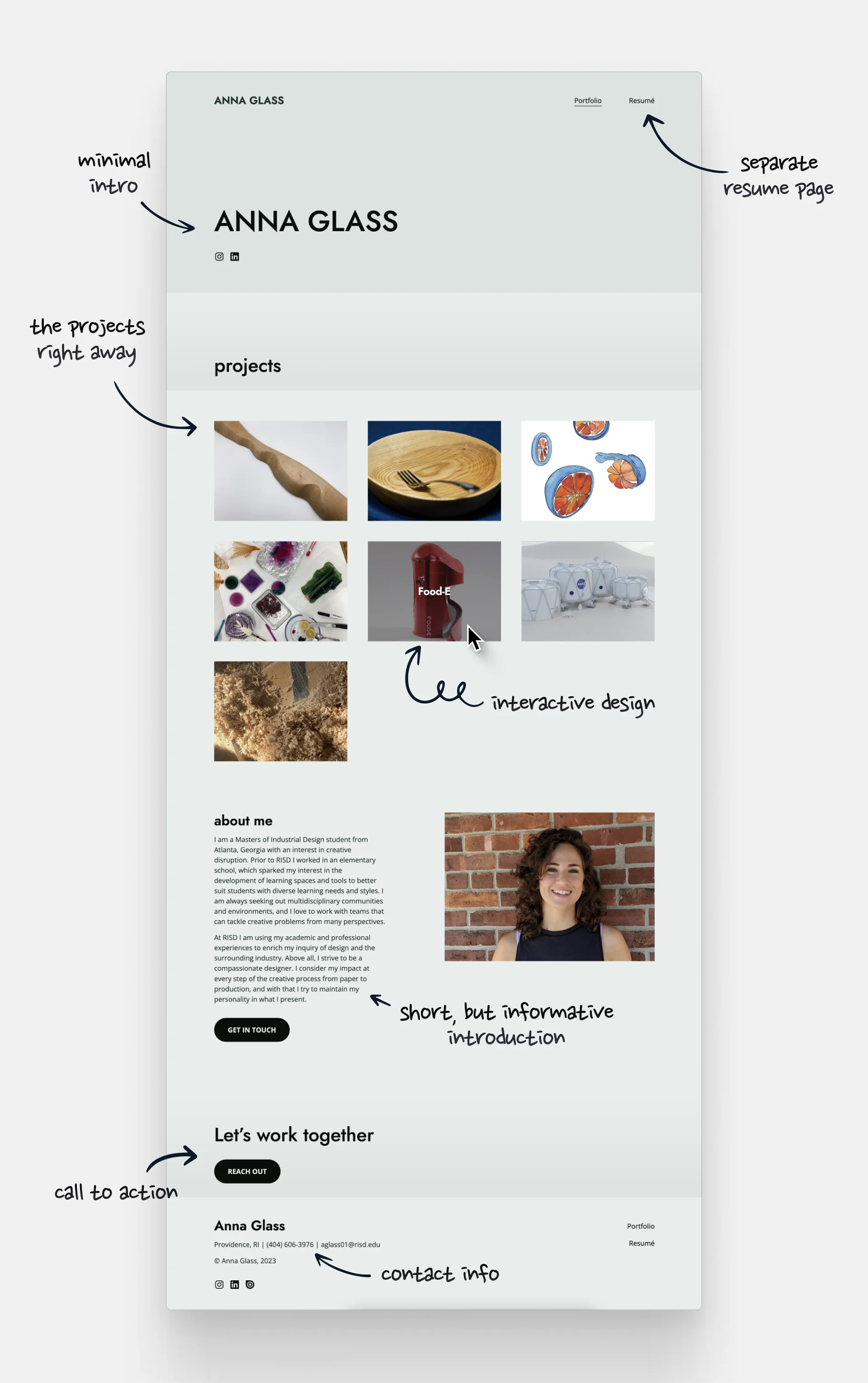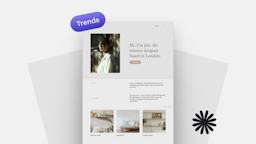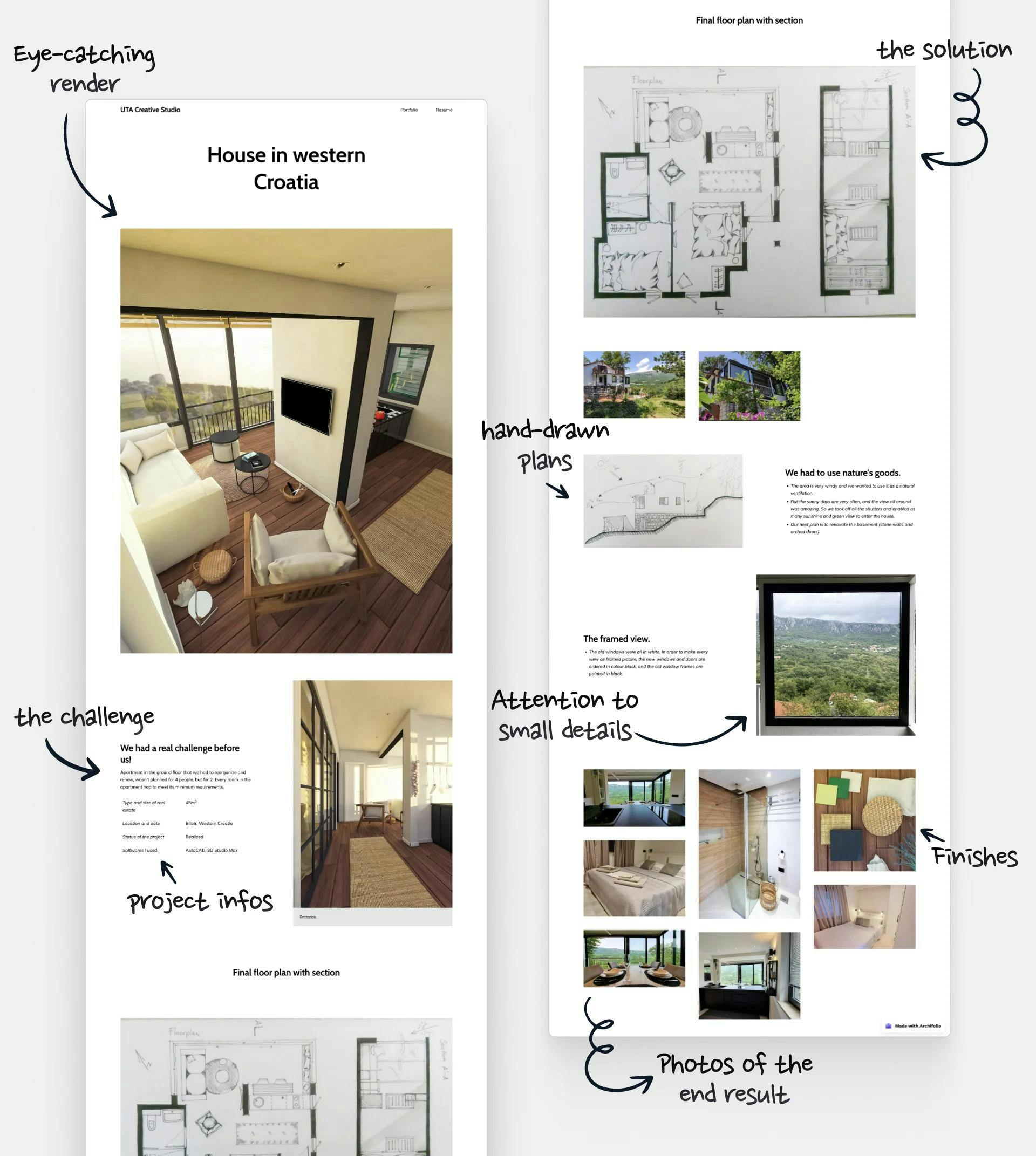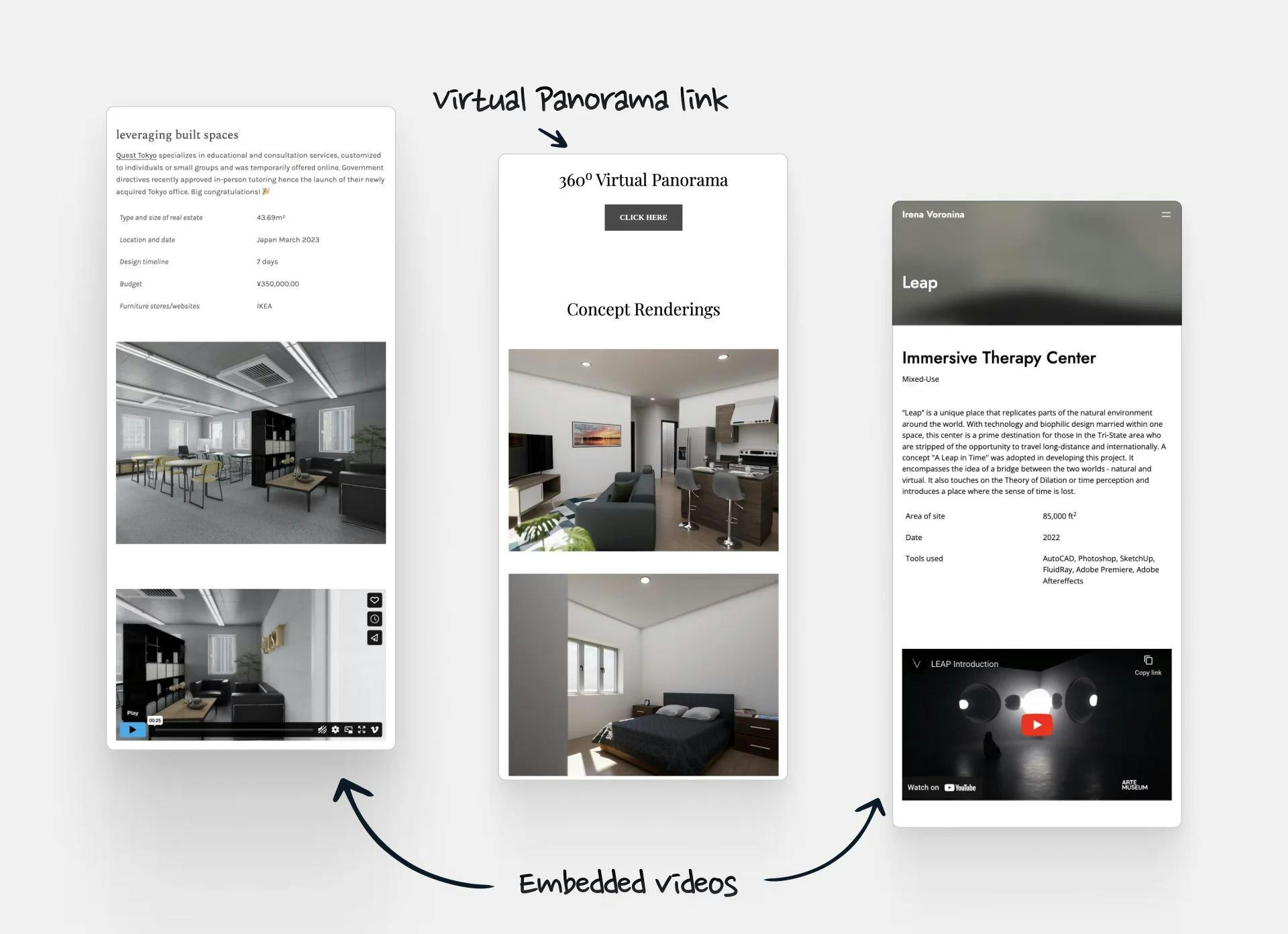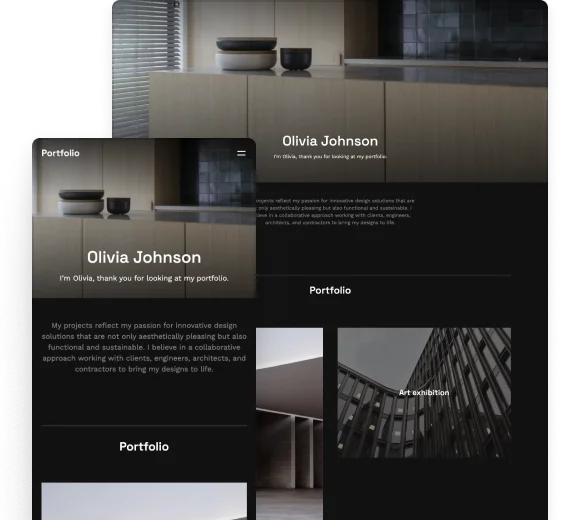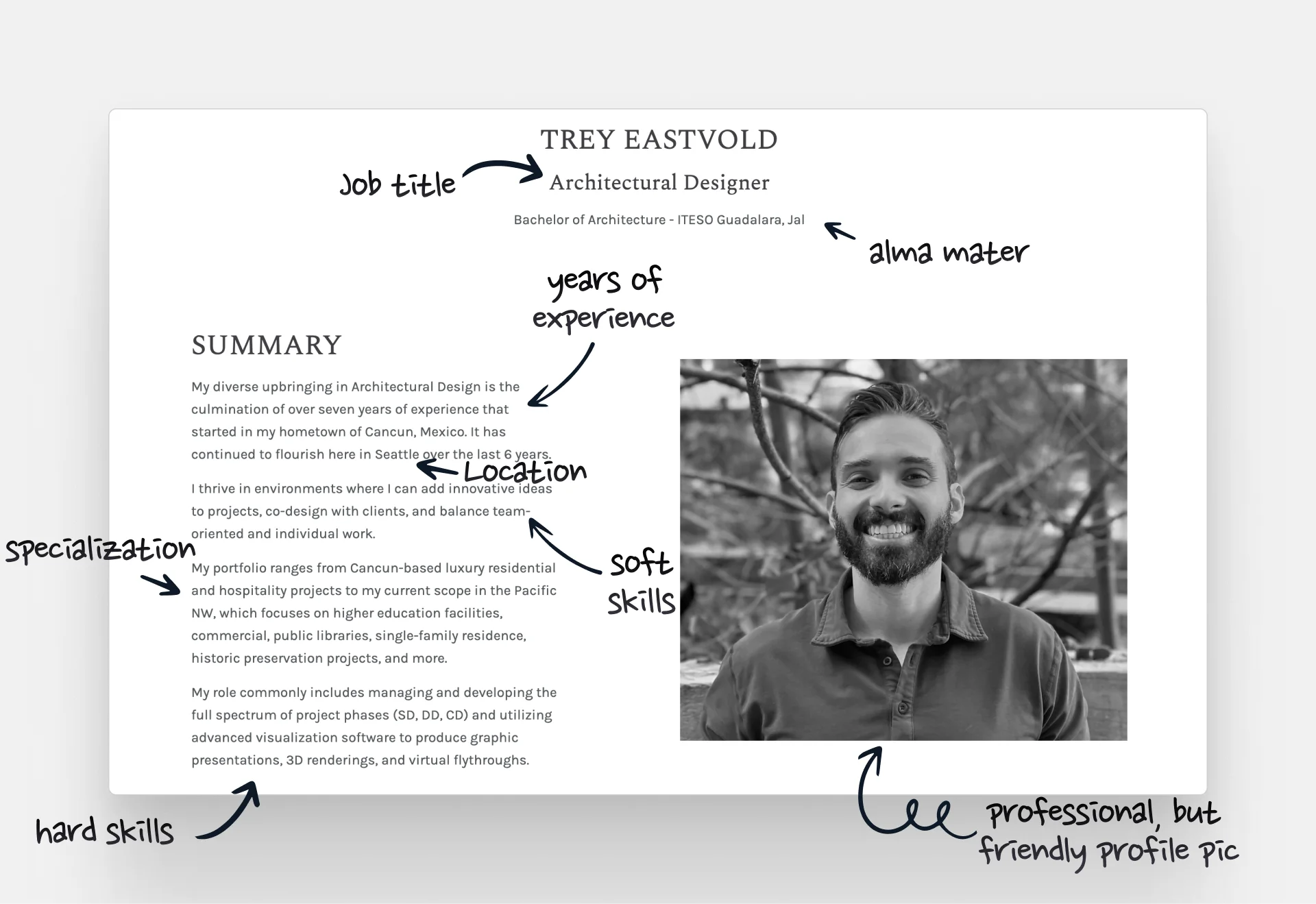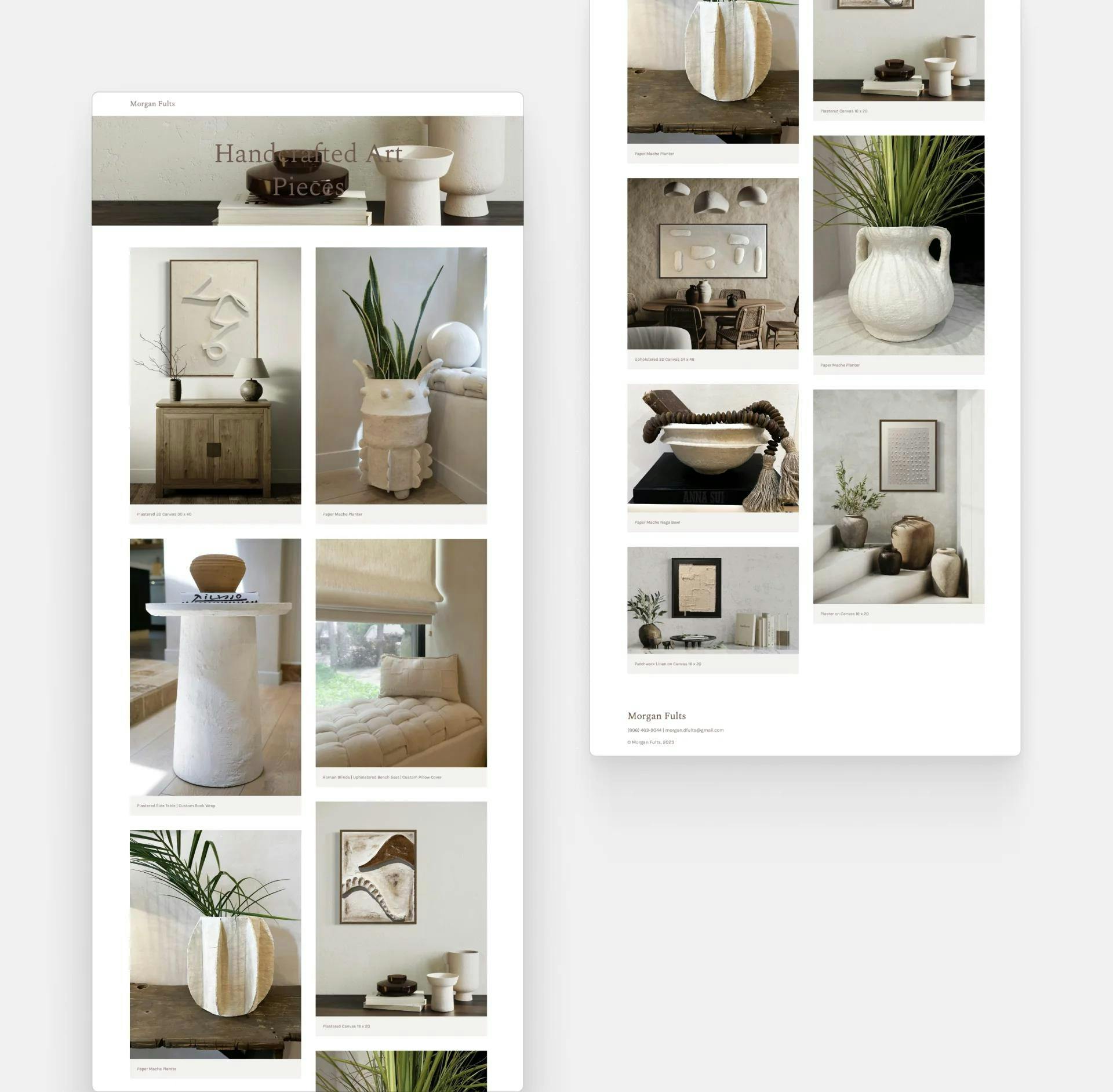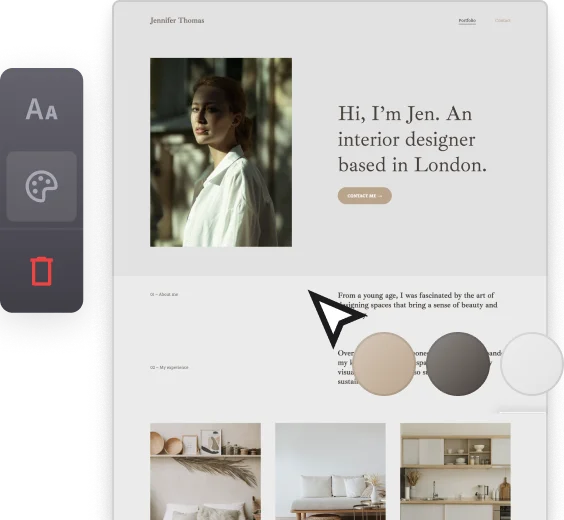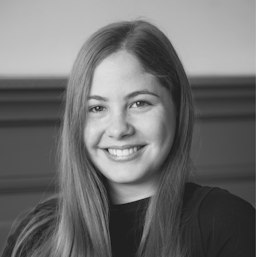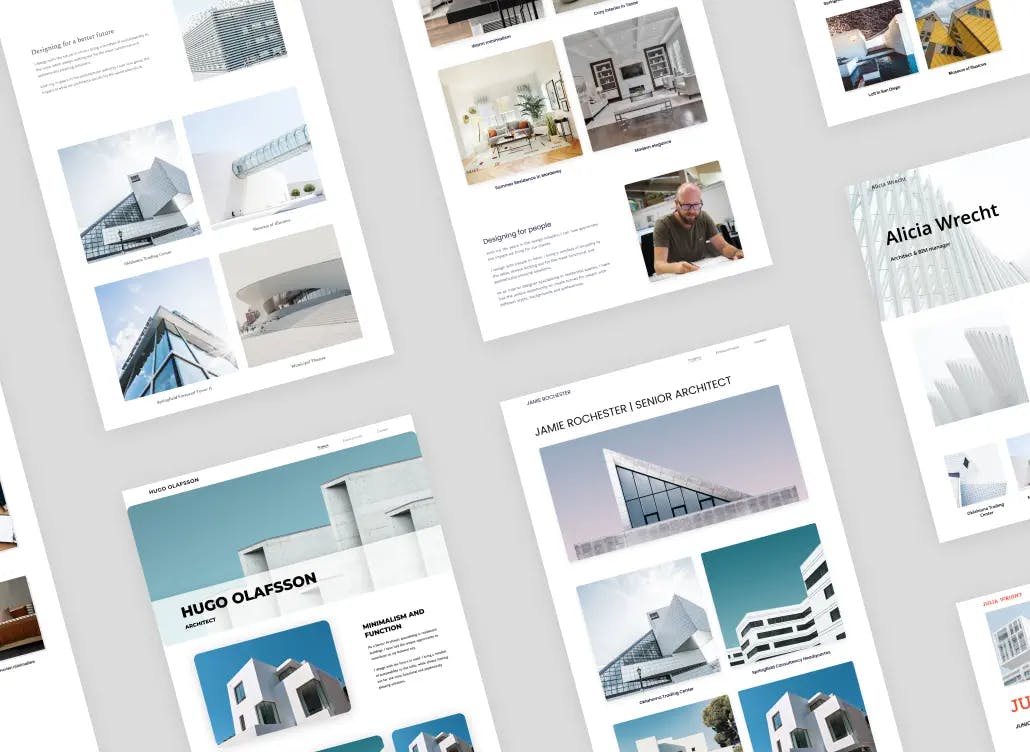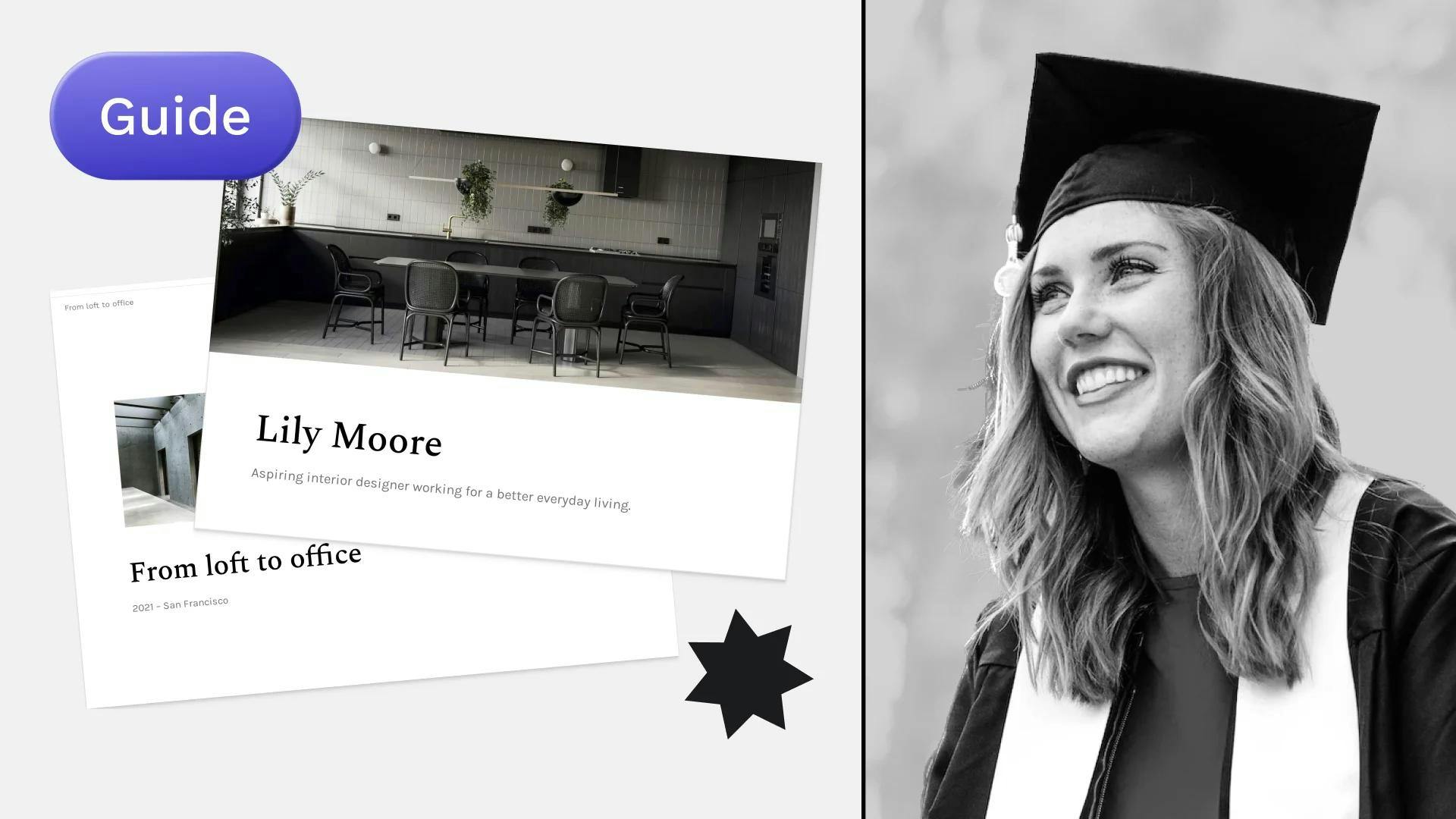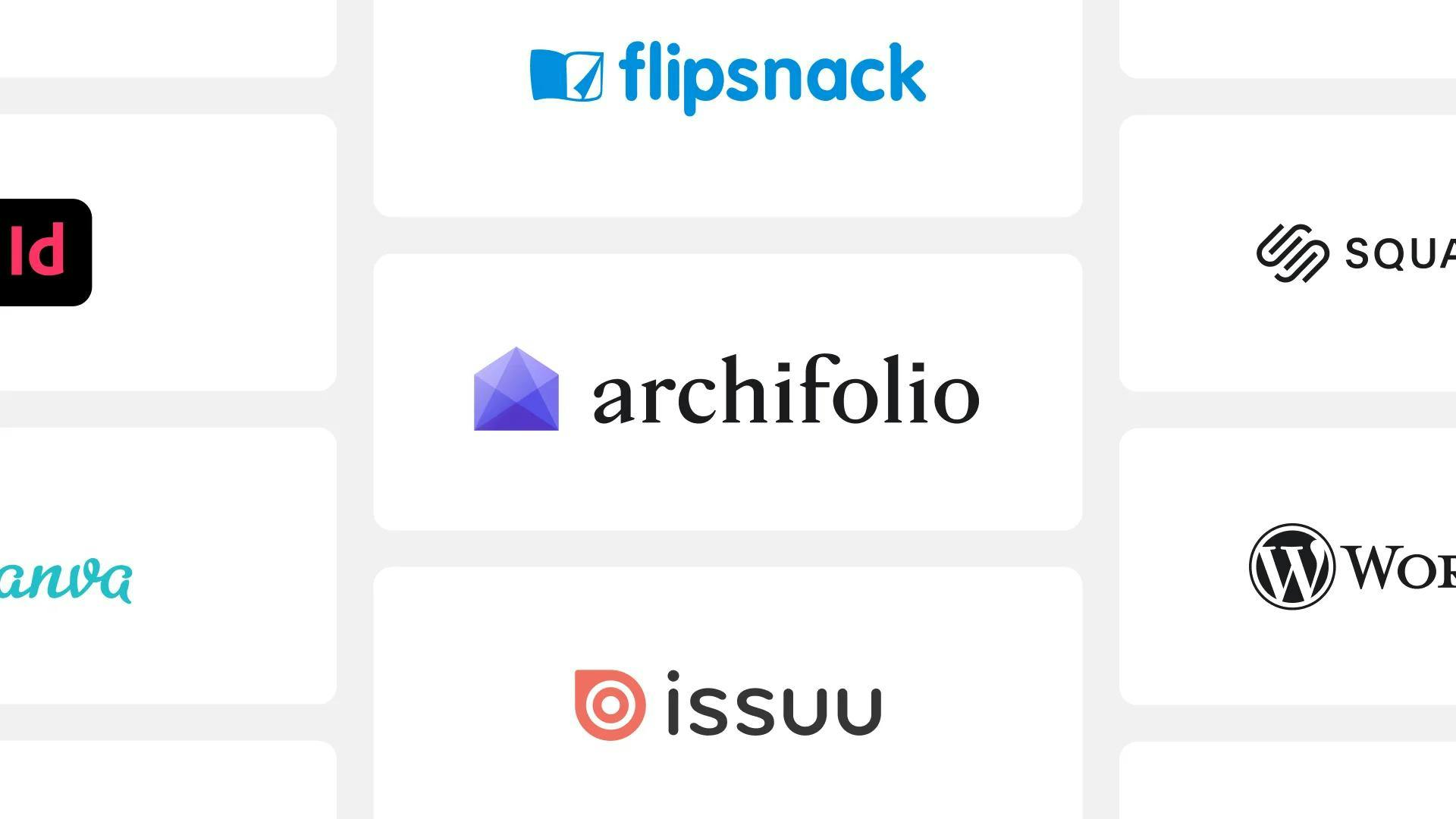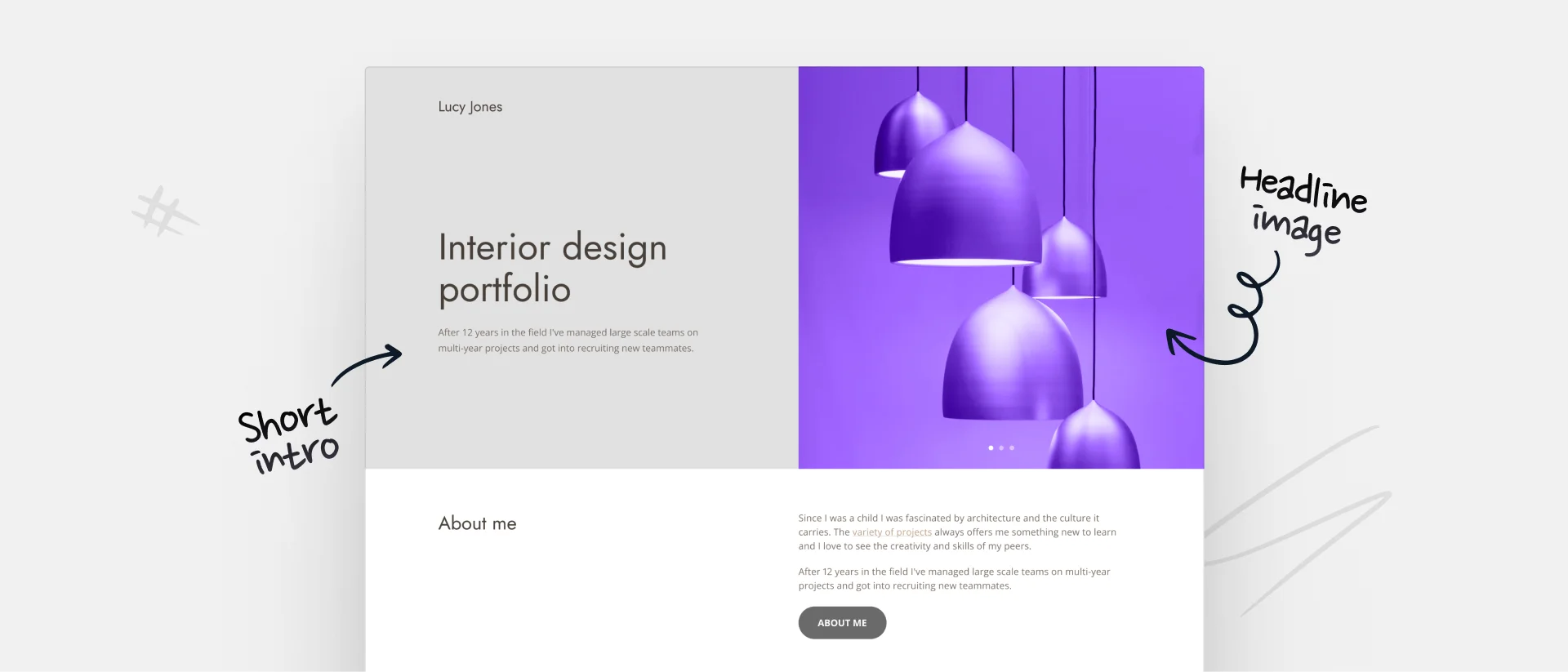
How to Make an Interior Design Portfolio Stand Out? - Examples & Tips
Creating a lasting impression with your portfolio is why you create one in the first place. Being memorable even after just a quick look into your work is what gets you that job you really want. But in such a competitive industry, how do you make an interior design portfolio that *actually* stands out?
We’ve collected 5 tips to impress any recruiter and create a one-of-a-kind and unforgettable portfolio.
1. Have a project-first mentality
Recruiters are generally interested in the following:
- the overall aesthetic and functional quality of your projects,
- the diversity of your projects to assess your adaptability to different client preferences and project requirements,
- how well your experience and skills fit the position, and
- your creativity and attention to detail.
If you observe this list, you’ll see that the stars of your interior design portfolio are your project pages. Therefore, making them easy to view is vital. Don’t hide your them under a separate menu item, rather make your home page the home of your projects as well.
Anna Glass created a portfolio that has a project-first mentality. She also added some stunning thumbnails that lead our eyes to her project and make us want to see more.
How you lead visitors to your projects is of paramount importance. Step one is having eye-catching cover images for each of the project page links (a.k.a. thumbnails).
After that, consider utilizing some type of interaction animation to lead the eye of your visitor to the projects. For example, if someone hovers over your thumbnail, the image can move a bit, or the title of the project may appear.
Keep interaction animations to a minimum. It’s easy to go overboard and create a cluttered, distracting site.
2. Show your process, not just fancy renders
A lot of job application portfolios focus solely on showing pretty renders. It’s easy to trace back this mistake to getting inspiration only from the websites of interior design studios and big firms.
But keep in mind: Their aim is to get clients, yours is to get hired. For a potential client, it may be perfectly enough to look at nice, professional 3D renders. However, when you’re trying to impress other architects, you’ll need to show your thought process.
This example shows every relevant detail about the project from hand-drawn plans to photos of the end result.
How can you best showcase your project?
- Start with a featured, eye-catching render,
- Write a short intro about the project (talk about the client brief),
- Add a few contextual information (like the size and budget of the project),
- Add your project output (floorplans, mood boards, renders),
- End with some impressive visuals of the end result (e.g. renders or photographs).
Also, talking about results in writing may just include the keywords the recruiter needs. Were the plans you made approved for construction? Did you manage to carry out the project ahead of time? Did the project adhere to the budget? Was the client satisfied with the results?
3. The world beyond PNGs
Many interior designers forget that different types of multimedia are available for showcasing a project. High-quality images are great, but you can dream bigger. You can, for example, utilize 360-degree panoramic images or virtual reality technology to create interactive virtual tours of your projects.
Alternatively, include video walkthroughs to showcase the flow and functionality of the space. There you can highlight specific design elements and discuss the thought process behind your design choices.
These three portfolio examples show how you can showcase your projects besides static images.
Consider creating a video resume. It’s a dynamic new way to captivate employers with your skills, personality, and innovative approach while saving them time.
Of course, including a video in your PDF portfolio isn’t an option. An alternative solution, such as a portfolio website, may just be the way to stand out.
4. Don’t make your “About Me” about you
Wait… what? While it seems counterintuitive, your “about me” section is much more about the company than you’d think. More specifically, it should be about the value you’re bringing to the firm when you’re hired.
Tell them about your experience, skills, and certifications that are relevant and that’ll aid you in your work in the given position. The best way to structure your introductory paragraph is by taking a close look at the job description. Find the keywords they used, and use them in your application where relevant.
This is also the perfect place to express your interest and enthusiasm for the given company or role. Just make sure that you don’t write too much. People come to see a portfolio for the visuals, not to read a novel.
Here’s a great “about me” example from an architecture portfolio:
Trey’s portfolio summary is a spot-on introduction. It is well-structured and information-dense without being too long.
What your “about me” shouldn't be about:
- a quote from a famous architect that everyone knows by heart,
- a long description of your design philosophy that doesn’t say much,
- application clichés (e.g. saying that you’re hard-working and a team player),
- what you like to do outside of work,
- what your dog's name is.
You may find a place for it in another part of your application, but this short paragraph is strictly about making sure that the recruiter gets to see that you’re a perfect fit for the job.
5. Give sneak peeks into your personal style
Even though flexibility is the most important trait of a designer, having a clear voice and personal style is something that will make your portfolio stand out. Show what you do outside of client work. Naturally, this shouldn’t be the first thing you showcase, nevertheless, having it is a huge plus.
What better way is there to showcase your creativity, style, and personality, than a collection of your favorite art projects? It can be anything from painting and sculpting to graphic design and digital artworks.
Other than just her artwork, Morgan also creates small compositions around them to showcase her interior design skills.
Takeaway: How to make an outstanding interior design portfolio?
You've just discovered five key strategies to make your interior design portfolio truly stand out. By implementing these tips, you can leave a lasting impression on recruiters and create an unforgettable application.
However, the most important takeaway is this: Create your portfolio with your audience in mind. If your visitor has a good experience with your portfolio, they’ll remember you.
Ready to jump in and build an incredible portfolio? Use Archifolio and build an interior design portfolio website that looks amazing. It’s as easy as portfolio creation gets.
